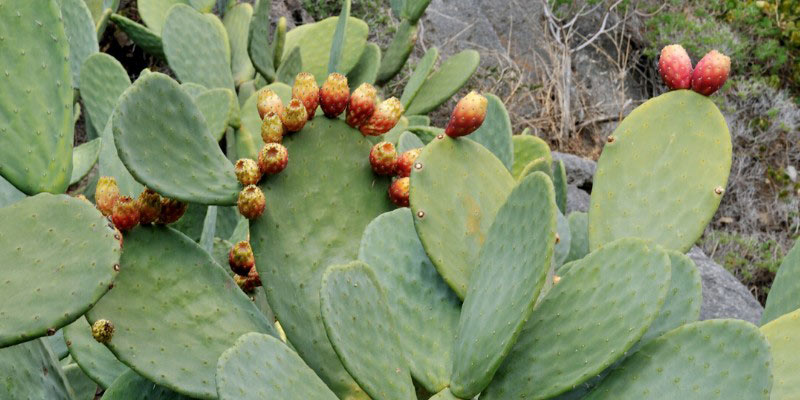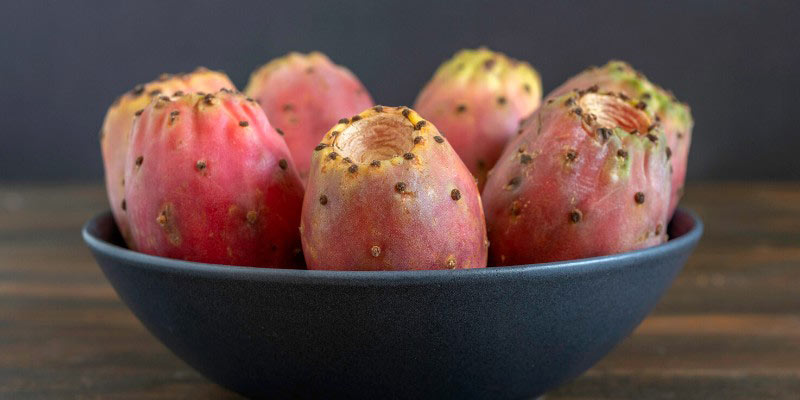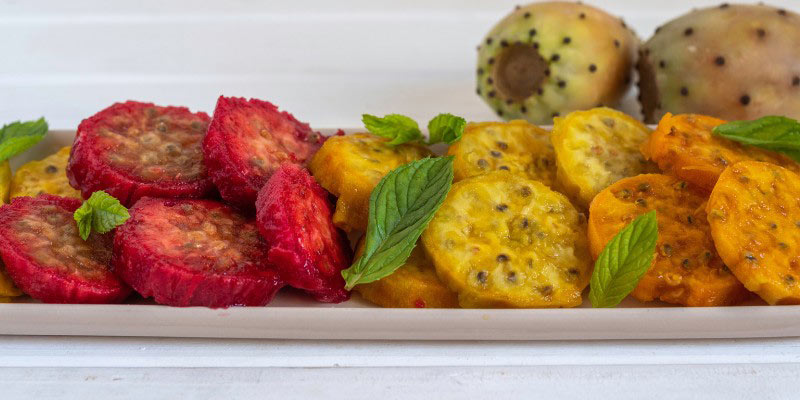Prickly pears are unusual fruits that come from a cactus, Opuntia ficus-indica. It forms broad, flattened sections, resembling large prickly pear pads, which is why it is nicknamed prickly pear cactus. Native to Mexico, this cactus has naturalised in France in Mediterranean regions, so it can be harvested in the wild or grown in the garden. Prickly pears can also be bought commercially. In this tutorial we explain when and how to harvest them, and give all our advice on how to store and cook them.
Prickly pear cactus: what is it?
Prickly pear cactus belongs to group of Oponces or Opuntia. It is specifically Opuntia ficus-indica. It is native to Mexico, where it is called nopal, but has naturalised in several regions of the world, notably around the Mediterranean. Its name means "fig tree of the Indies", because it was brought from America by Christopher Columbus, who thought he had arrived in India. Prickly pear cactus produces pretty orange-yellow flowers, which appear directly on the prickly pear pads, usually at their top. They are followed by appearance of fruits, the prickly pears. They are fleshy, rounded to ovoid, generally yellow, orange or reddish, even purplish, and measure 5 to 8 cm long. They contain very sweet pulp, slightly sweet, and numerous small black seeds. In English they are called prickly pears, literally "poires épineuses". Prickly pears are valued for nutritional benefits, notably richness in fibres, vitamin C and magnesium. They are said to have antidiarrhoeal, anti-inflammatory, wound-healing and antioxidant properties.
In Mexico, the fruits are eaten in various ways, notably in salad. They are even used to make a surprising alcoholic drink called Colonche, prepared from fermented prickly pears.
For full details on cultivation, see our complete sheet: "Opuntia, Prickly pear cactus: planting, cultivation and care"

Which to choose for cooking?
Prickly pears produced by Opuntia ficus-indica are generally eaten. However, those of Opuntia humifusa can also be used, which produces slightly smaller fruits. This is a species originally from eastern United States and Canada, but which (like Opuntia ficus-indica) has naturalised in France and several parts of Europe.
When to harvest prickly pears?
Fruits are harvested at end of summer, between August and September, sometimes October. Choose fully ripe fruits that come away easily. They are recognisable by bright colour — deep red, purple or orange — and slight softness to touch. Harvesting prickly pears requires caution because of their tiny thorns. Use thick gloves and a knife to detach them from the cactus.

How to store them?
If prickly pears were not fully ripe when harvested or purchased, they can be kept for several days at room temperature until they ripen. Once at ripeness, place them in vegetable drawer of fridge. They should be eaten quickly, as they will only keep for a few days. However, it is also possible to freeze them to keep up to 1 year. Put them in freezer whole or after peeling and cutting.
How to cook them?
Fruits bear tiny thorns, the glochidia : they therefore must be peeled before eating. Remember to use gloves! You can remove spines by rubbing fruit with a brush. Be careful, as small prickles may still remain hard to see with naked eye.
Prickly pears can be eaten fresh, as they are, sliced for example into rounds or cubes. They can be added to a fruit salad or blended into a smoothie, where their sweet, slightly tangy flavour shines. To make juice or a smoothie, cut into pieces, put in blender bowl to blend, then pass juice through a fine sieve to remove seeds. For more creative uses, consider cooking into jam, jelly or syrup, incorporating into desserts or serving with savoury dishes. They can also be made into sorbet.

































Comments